Nestled between Osaka Bay and Mount Rokkō, Kobe is one of Japan’s largest and most scenic cities. After experiencing a catastrophic earthquake in 1995, parts of Kobe were rebuilt and are now more vibrant and prosperous than ever. Famous for its delicious Kobe beef, the port city offers numerous activities and cultural sites for visitors to enjoy.
Here are the 10 best attractions to explore in Kobe, Japan:
- Arima Onsen
- Kobe Earthquake Memorial Museum
- Kobe Fruit ; Flower Park
- Akashi-Kaikyo Bridge
- Kitano-chō
- Mount Rokkō
- Hyogo Prefectural Museum of Art
- Ikuta Shrine
- Nunobiki Falls
- Kobe Beef Restaurants
Arima Onsen
Arima Onsen is one of Japan’s oldest hot spring resorts.
Located on the opposite side of Mount Rokkō from the main city, this secluded retreat is the perfect place to wind down while visiting Kobe. In fact, many publications rank it among the greatest onsen (hot spring resorts) in the country.
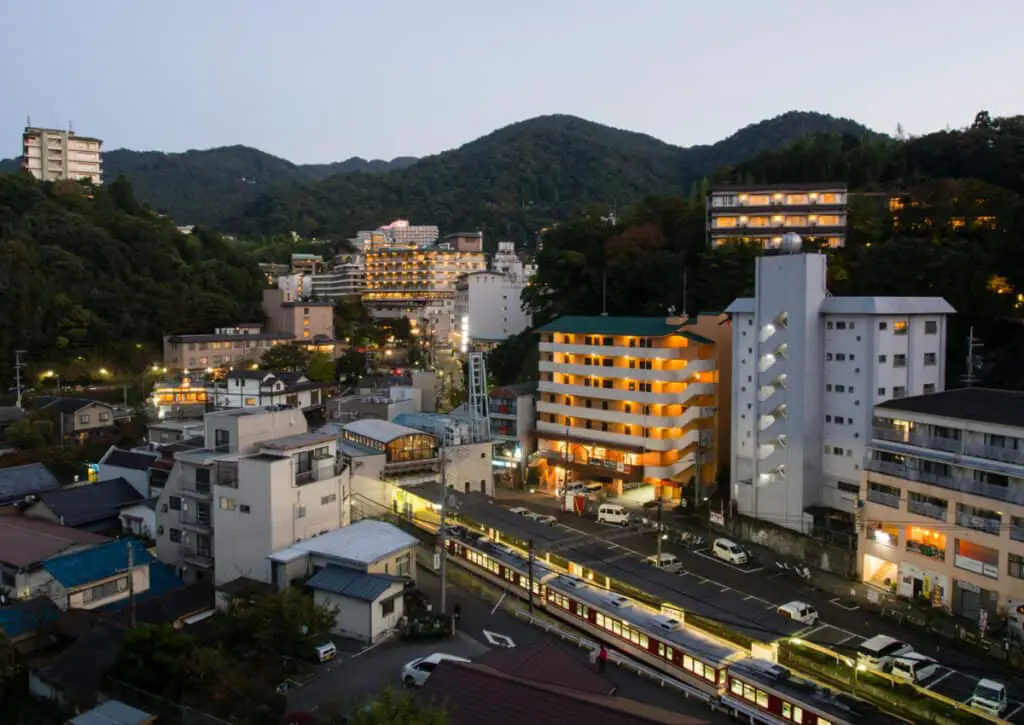
The small town has two types of hot spring water:
- Kinsen– “Gold Water” – Hot springs that are brownish-orange due to iron. The natural iron and salt in the water are said to help with skin issues and arthritis.
- Ginsen – “Silver Water” – Clear spring water that contains radium and carbonate. It can relieve muscle aches and treat poor blood circulation.
In addition to the hot springs, tourists can stroll Amira Onsen’s narrow streets lined with small wooden shops and shrines.
Visitors interested in the hot springs have the option of visiting the public bathhouses that are open daily. Tourists can stay at one of many serene and hospitable onsen ryokan inns.
Arima Area Onsen Official Website
Kobe Earthquake Memorial Museum
On January 17, 1995, the Great Hanshin Earthquake tragically struck Kobe. This natural disaster leveled many parts of the city.
However, the resolute citizens of Kobe and the surrounding areas worked together to rebuild. And in 2002, the Kobe Earthquake Memorial Museum was opened to immortalize lost lives and commemorate the resilience of survivors.
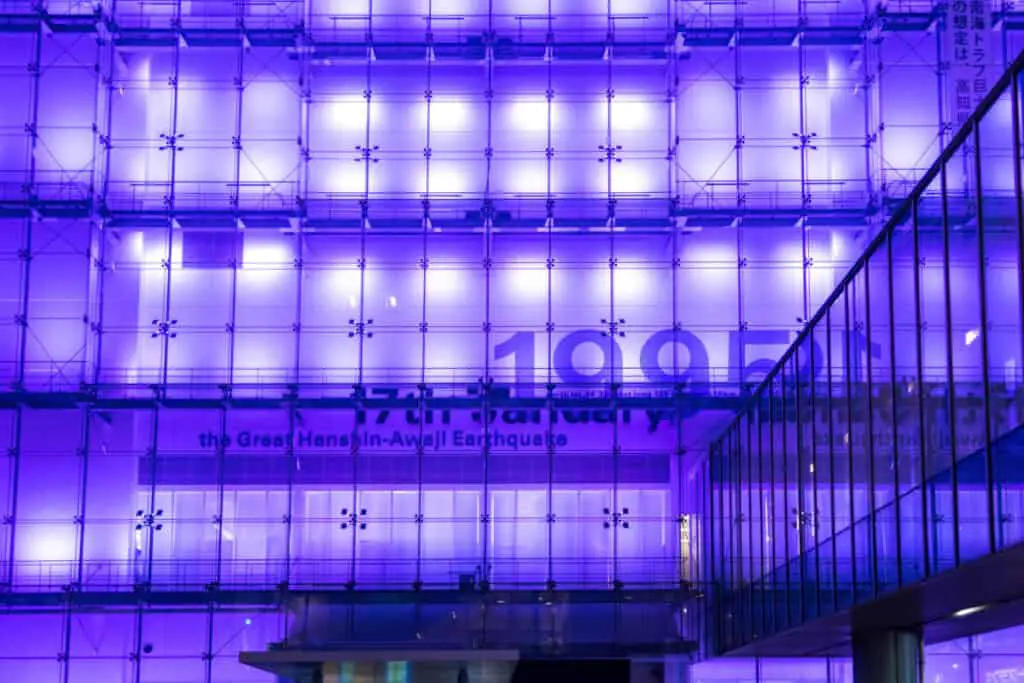
The museum is an excellent place to learn about Kobe’s recent history. It features multiple floors and video presentations chronicling the earthquake’s effects on the city and the aftermath. Many of the exhibits are also interactive, making them more engaging for children and teens.
The museum is located east of the city center and is a ten-minute walk from Iwaya Station on the Hanshin Main Line. Admission is ¥600 for adults (~$5.25) and free for children.
Kobe Earthquake Memorial Museum Official Website
Kobe Fruit And Flower Park
Kobe Fruit and Flower Park is an amusement park, hotel, onsen, and botanical garden all in one. Beloved for its wide array of colorful flowers, the park is the perfect place for a family vacation.
From July to October, Kobe Fruit Flower Park offers fruit picking for visitors. While there are many delicious fruits to choose from, the park is most famous for its Japanese white peaches (momo).
After picking fruit, tourists can treat themselves to a serene ride on the Ferris wheel. Or stop at the park’s barbecue restaurant and enjoy smoked meats while taking in the views.
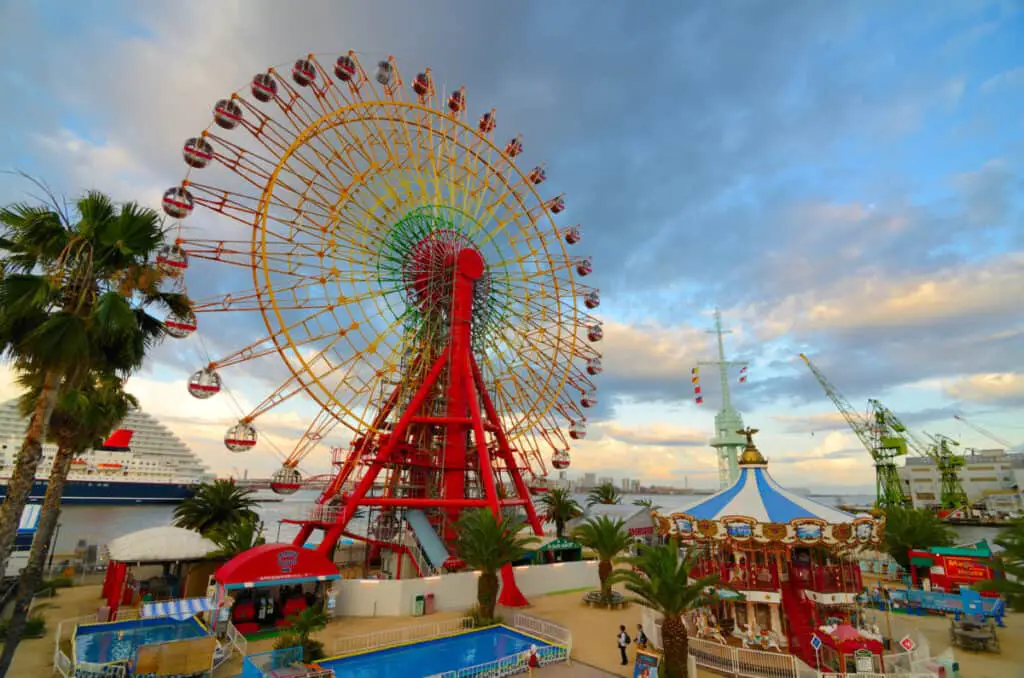
Kobe Fruit Flower Park has a distinctly Bavarian look to its architecture. This design is in part meant to commemorate the history of European merchants visiting Kobe’s ports.
The park also has a dazzling winter lights show that runs from November to December. So if you’re in Kobe during the colder months, make sure you don’t miss it.
Admission for seeing the winter lights event is ¥1,200 (~$10.50) for adults and ¥600 for children. Entrance to the park at other times is free.
Kobe Fruit Flower Park Official Website
Akashi-Kaikyo Bridge
Spanning the Akashi strait between Honshu and Awaji, the Akashi-Kaikyo Bridge is one of Japan’s most magnificent engineering feats. At just under 2.5 miles long, it was also the world’s longest suspension bridge when finished in 1998.
Tourists can walk across the bridge via the Maiko Marine Promenade. Those who do are privy to sweeping views of Kobe city in the shadow of Mount Rokkō and the shimmering blue waves of Osaka Bay.
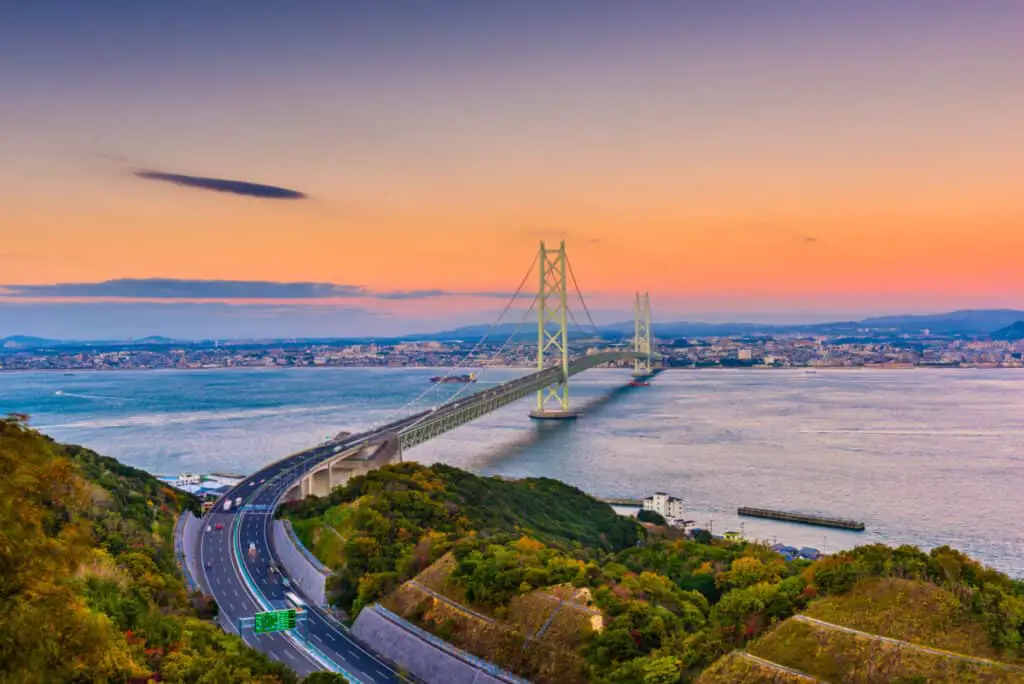
Akashi Kaikyo Bridge Official Website
One of the features that make the bridge especially appealing for a stroll in the glass-paned flooring. Pedestrians can watch the waters of Akashi Strait churn below them as they occasionally stop for pictures. So if you’re afraid of heights or suffer from vertigo, you may wish to avoid this spot or don’t look directly down.
Admission to the bridge’s promenade is usually ¥250 (~$2.20) for adults and free for children.
Kitano-chō
Looking like a neighborhood out of time long ago, Kitano-chō is a district in Kobe known for its 19th-century European-style mansions.
When Kobe opened its ports in 1868, the city quickly became a focal point of international trade. As a result, many foreigners made the city their home and built gorgeous villas overlooking Kobe.
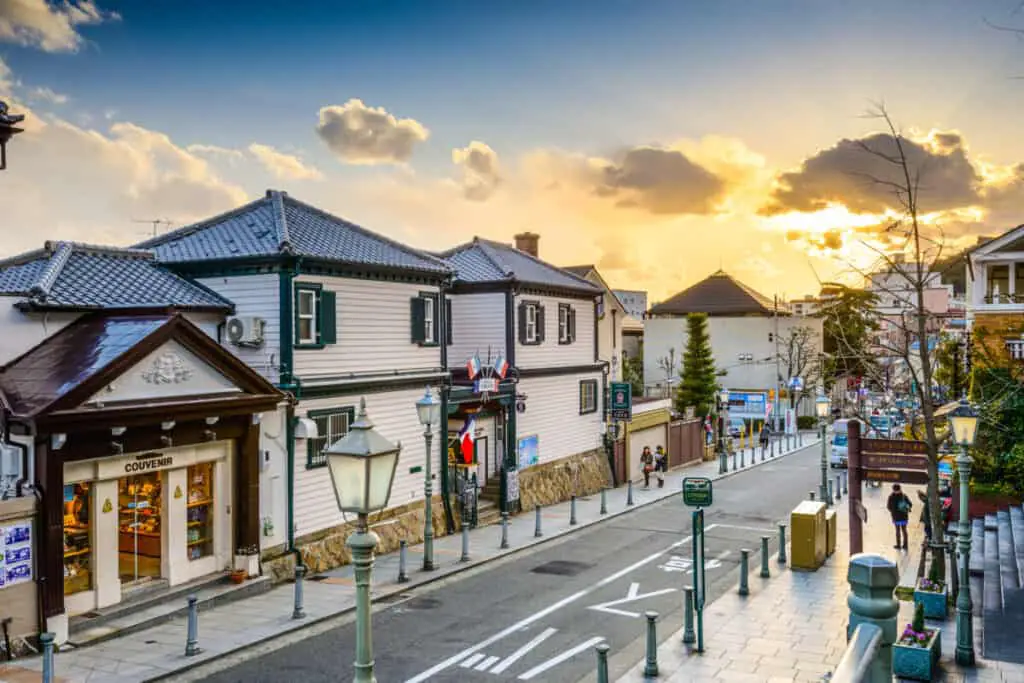
Kitano-Cho Points Of Interest Via Tripadvisor
These former residences, called Ijinkan, are now mostly open to the public as museums. In addition, virtually all of them charge a very modest admission fee.
Kitano-chō itself has retained much of its European and English influence in terms of aesthetics. Along its streets, you can find all sorts of quaint European-themed cafes and shops.
The old town aura and peaceful mountain vistas make Kitano-chō especially popular for couples.
Mount Rokkō
Mount Rokkō is the highest mountain in the Rokkō mountain range that flanks Kobe to the North.
The mountain provides a dramatic backdrop to the sights of the city. Additionally, the hike to the top of Mount Rokkō offers sweeping panoramic views of Kobe and Osaka below.
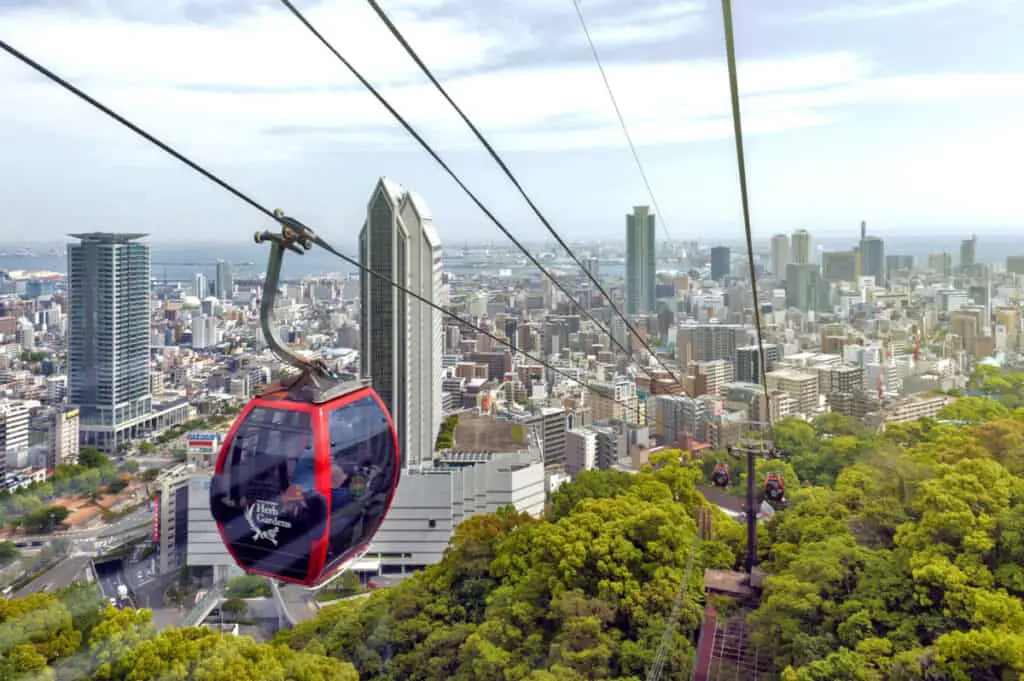
Mount Rokkō is considered one of the Three most amazing Major Night Views of Japan. With the city lights flickering below and the stars twinkling above, the top of the mountain has an ethereal beauty to it. You’ll be hard-pressed to find a more majestic vista, especially once night falls.
Additionally, tourists can enjoy numerous attractions on the mountain. These include an observation deck, music box museum, and even Japan’s first-ever official golf course.
Getting around the mountain is easier than you might expect. A circular bus line connects most of the major sites to save you time and effort.
Hyogo Prefectural Museum of Art
Built after the 1995 earthquake, Hyogo Prefectural Museum of Art is an excellent contemporary art museum found along Kobe’s waterfront.
Designed by famed architect Tadao Ando, the minimalist aesthetic of the sprawling complex is mesmerizing. Inside, you’ll find paintings, sculptures, and prints from both Japanese and international artists.
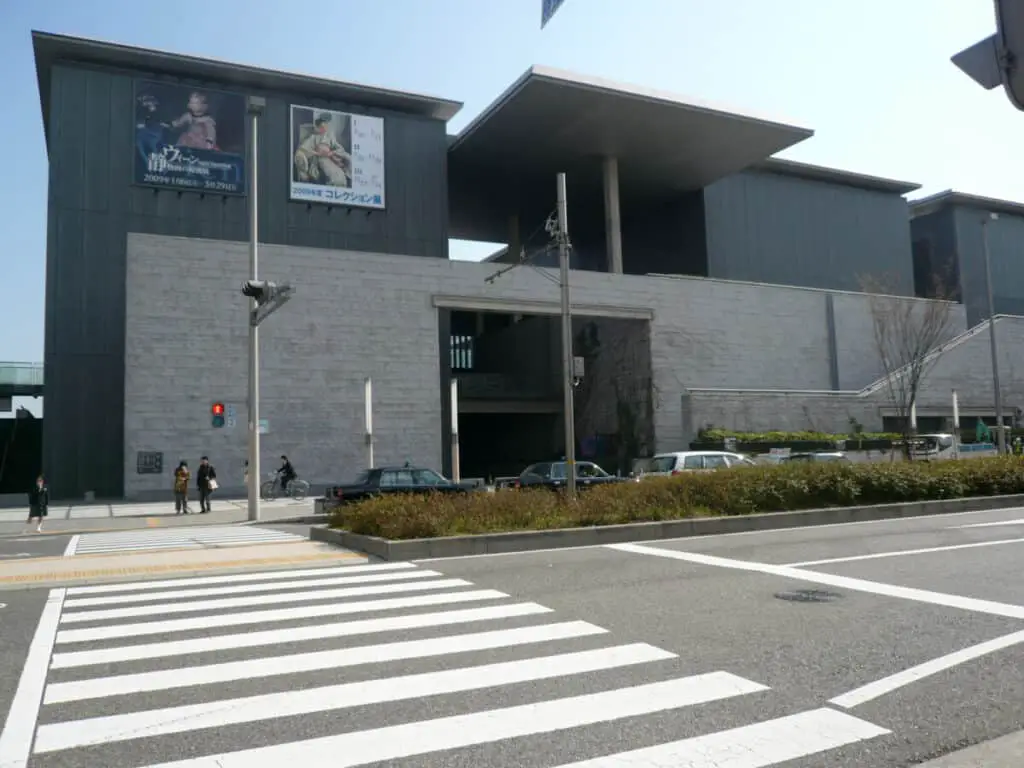
Hyogo Prefectural Museum Of Art Official Website
The museum also has auditoriums where it can hold special events and performative art exhibitions. As a result, it’s one of the most significant cultural and artistic sites in Kobe.
There are a couple of ways to get there. The museum is a ten-minute walk from Iwaya Station on the Hanshin Main Line. Alternatively, you can reach on foot in 15 minutes from Nada Station on the JR Kobe Line. Admission for the permanent (main) exhibit is ¥500 (~$4.40).
Ikuta Shrine
At 1800 years old, Ikuta Shrine is one of the most historic sites in Kobe.
Ikuta Shrine features a large red wooden Torii outside the building. In the Japanese religion of Shinto, passing through these large structures represents a transition from the normal into the sacred.
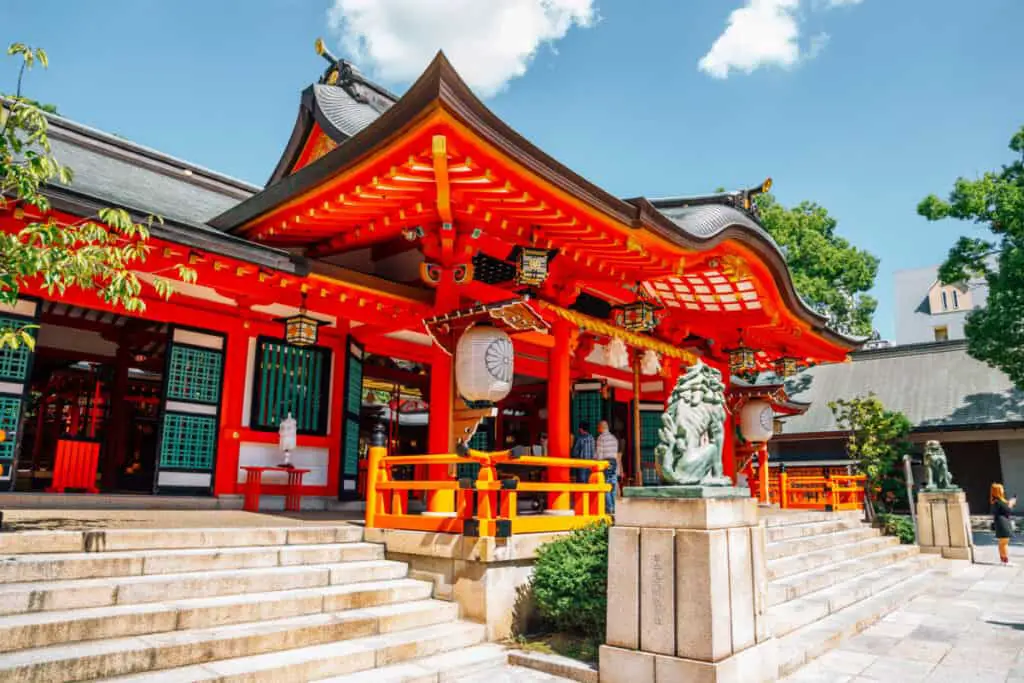
In addition to its religious significance, the shrine was also the site of significant turmoil. During the Genpei War, the Battle of Ichi-no-Tani took place around and inside the shrine.
While you can’t usually enter Ikuta Shrine, that doesn’t mean it’s not worth seeing.
In addition to its beautiful exterior, the shrine often holds Noh plays for visitors. These performative dance dramas are the oldest form of drama still performed today. They give tourists a glimpse into the rich history and vibrant traditions of Japan.
Nunobiki Waterfalls
Not all of Kobe’s great attractions are made by people.
Located surprisingly close to downtown Kobe, the Nunobiki Waterfalls are the subject of many Japanese paintings and poems. In fact, there are stone tablets near the falls with some of these poems and odes etched onto them.
Nunobiki Waterfalls is a must-see for nature-loving tourists. The secluded and overgrown look of the paths makes visitors feel like they’re in a tranquil forest far from the city.
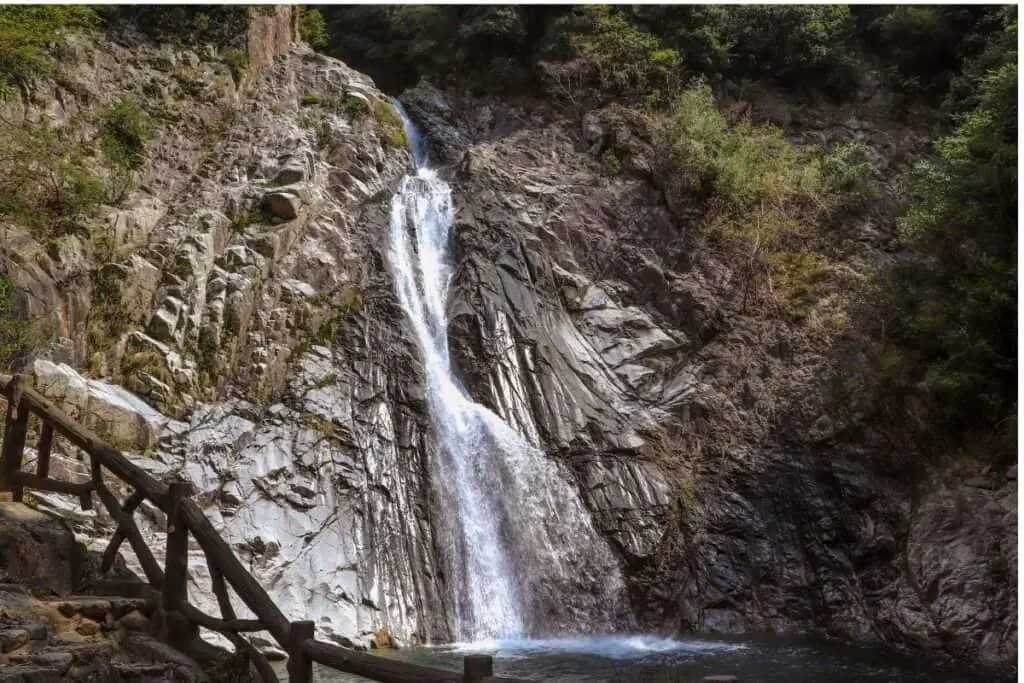
Getting to Nunobiki Waterfalls is much easier than some of Japan’s other famous falls. You can walk directly there from Shin Kobe station. Or, if you have a rental car, you can park near the hiking paths to the waterfalls.
Nunobiki Waterfall Via Tripadvisor
Kobe Beef Restaurants
No visit to Kobe is complete with trying Kobe beef.
Kobe beef is one of Japan’s most acclaimed delicacies. It’s a type of wagyu beef derived from Tajima Japanese Black cattle raised in Hyōgo Prefecture (where Kobe is located).
Numerous restaurants offer this legendary meat, usually in the form of steak or teppanyaki (similar to and often confused with hibachi).

Misono in downtown Kobe is one of the best places for visitors to try Kobe Beef. This pricey but luxurious restaurant is world-renowned for its delectable Kobe beef dishes. It is also the birthplace of teppanyaki.
Best Kobe Beef Restaurants In Kobe Japan Via Tripadvisor
For tourists who don’t want to spend too much money, there is also Gyudon Hiroshige. They’re most famous for their Gyudon bowls, which also utilize delicious Kobe beef.










